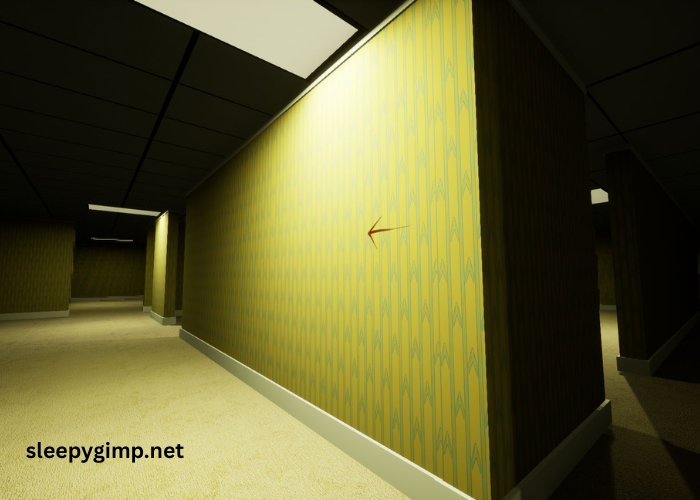The thrill of the hunt is one of the oldest instincts in human nature. Whether it is a literal hunt for survival or a metaphorical pursuit, the dynamics between the hunter and their prey have always captivated our attention.
In the context of Feliscede, we are introduced to a complex, psychological game where the lines between hunter and prey blur. This dangerous game is more than just a chase; it’s a battle of wits, strategy, and psychological warfare.
The story of a hunter revealing himself to his next prey brings with it tension, excitement, and anticipation. In Feliscede, the stakes are high, and every move is critical.
This blog will dive into the mechanics of this dangerous game, examining the strategies, the roles of the hunter and prey, and the thrill that both parties experience in this ongoing battle.
Key Points:
- The dynamic between the hunter and prey is based on strategy and psychology.
- Every action in this game can have significant consequences.
- The chase is not just physical, but mental and emotional as well.
What Makes the Hunter So Powerful?
In Feliscede, the hunter is not just a character with superior physical strength or abilities, but someone who has honed their skills in anticipation of the chase. The power of the hunter lies not only in their physical prowess but also in their strategic thinking. To be a successful hunter, one must think ahead, anticipate the moves of the prey, and know when to strike.
This process involves a careful balance of patience and calculation. The hunter must understand their prey’s weaknesses and tendencies. For example, in some cases, the prey may reveal a vulnerability that the hunter can exploit. In other cases, the hunter may need to be stealthy and wait for the perfect moment to pounce.
Note: A great hunter does not simply act on impulse; they observe and wait for the right moment to strike.
In Feliscede, this psychological aspect of hunting adds a layer of complexity. The hunter must also be mindful of the prey’s own strategies, as prey may not always react predictably. This mental chess match is what makes the hunt so dangerous and exciting. It’s a dance of tactics, patience, and mind games.
| Hunter’s Strengths | Description |
| Strategic Thinking | Understanding the prey’s behavior |
| Physical Skills | Ability to track and move stealthily |
| Psychological Insight | Knowing when and where to strike |
How Does the Prey React to the Hunter?
While the hunter has a clear advantage, the prey is not without its own strengths. The prey in Feliscede is often depicted as being clever, resourceful, and sometimes even more capable than the hunter at certain points in the chase. The prey’s primary goal is survival, and this instinct drives them to act in ways that are unpredictable, often forcing the hunter to adapt quickly.
The prey’s reactions are usually characterized by a mix of fear, determination, and an innate desire to escape. For example, they may try to hide, confuse the hunter with false trails, or set up traps to turn the tables. Some prey might even attempt to confront the hunter directly, turning the chase into a battle of wills.
This dynamic creates a constant back-and-forth between the two sides. As the hunter gets closer, the prey’s actions become more frantic and desperate, but sometimes, these reactions can lead to mistakes. In Feliscede, the prey’s decisions often lead to their own undoing, yet occasionally, the prey manages to escape and live to fight another day.
| Prey’s Strengths | Description |
| Resourcefulness | Ability to find ways to evade or mislead the hunter |
| Instinct for Survival | Focus on escaping or fighting back |
| Psychological Maneuvers | Using deception to create confusion |
What Are the Psychological Elements of the Chase?
At its core, the chase in Feliscede is not just about physical skills; it’s about psychological warfare. Both the hunter and prey are constantly aware of each other’s presence and are always making decisions that will impact the outcome of the chase. The emotions of fear, tension, and excitement play a huge role in determining how each character behaves.
For the hunter, the psychological aspect involves creating fear and pressure. A good hunter knows how to make the prey feel trapped, even when they still have room to maneuver. The hunter might use tactics such as closing in slowly, making sudden movements, or pretending to retreat, only to lure the prey into a false sense of safety.
On the other hand, the prey experiences anxiety and must constantly evaluate their options. They are under immense stress, trying to predict the hunter’s next move while also deciding when to act. The prey’s mental resilience is put to the test, as fear and uncertainty can cloud their judgment, leading to mistakes.
These mind games create an intense atmosphere in Feliscede, making the hunt not only a physical struggle but also a mental battle between the hunter and the prey. The psychological tension builds throughout the chase, adding complexity and drama to the story.
Reminder: In any chase, psychological manipulation is just as important as physical action.
How Do Both Sides Deal with the Stakes?
In Feliscede, the stakes of the hunt are high, and both the hunter and prey are acutely aware of the consequences of failure. For the hunter, capturing or killing the prey is the ultimate goal, and failure can mean losing valuable time or resources. For the prey, the stakes are life or death, making every decision a matter of survival.
For the hunter, dealing with the stakes means staying focused and not letting emotions like frustration or impatience take over. The hunter must remain calm and stick to the plan, as acting impulsively can lead to mistakes. In many ways, the stakes push the hunter to become more strategic, careful, and calculated with every move.
For the prey, the stakes are even more personal. The fear of being caught or killed fuels the prey’s actions, making each choice more desperate and instinctual. They may experience moments of clarity and desperation, where they have to decide whether to fight, flee, or attempt to deceive the hunter. The stakes often force the prey to confront their own vulnerabilities, adding a psychological layer to the hunt.
| Character’s Stakes | Description |
| Hunter’s Stakes | Winning the hunt, maintaining control |
| Prey’s Stakes | Survival, escape from death |
Conclusion
Feliscede offers an engaging exploration of the dangerous dynamics between a hunter and their prey. It is a game that transcends physical skills and dives deep into the psychological realm. Both sides must outthink and outmaneuver the other, each relying on their instincts, strategies, and mental fortitude to win the game.
The tension and drama of the hunt are what make it so compelling. Whether it’s the hunter’s patience and psychological manipulation or the prey’s resourcefulness and desire to survive, the game is one of constant anticipation and high stakes. Ultimately, the dangerous game between the hunter and prey is not just a battle of physical prowess but a thrilling mental duel that will keep readers on the edge of their seats.
FAQ’s
- What makes the hunter so powerful in Feliscede?
The hunter’s strength lies in their strategic thinking, psychological insight, and physical skills. They know how to predict the prey’s moves and strike at the right moment. - How does the prey respond to the hunter?
The prey often reacts with fear and resourcefulness, using tactics like hiding or deception to evade capture. They may also become desperate and confront the hunter directly. - What is the psychological aspect of the chase in Feliscede?
The psychological warfare in the chase involves both the hunter and prey manipulating fear, pressure, and anticipation to gain an advantage. - What are the stakes in the dangerous game?
For the hunter, the stakes involve capturing or killing the prey, while for the prey, the stakes are survival—often life or death. - How does the hunt in Feliscede differ from traditional hunting?
Unlike traditional hunting, which focuses primarily on physical skill, Feliscede emphasizes strategy, mind games, and the psychological battle between hunter and prey.





